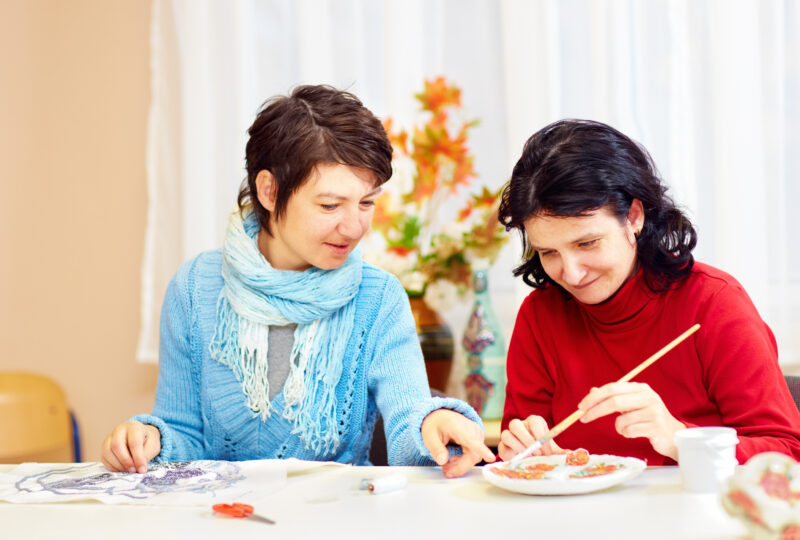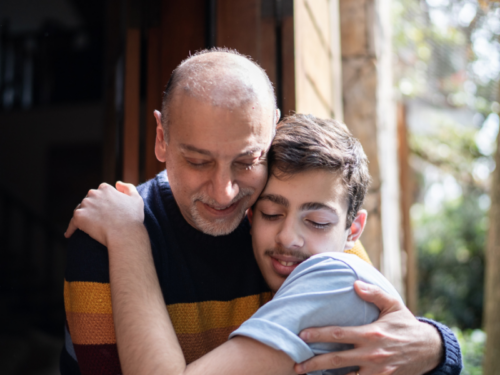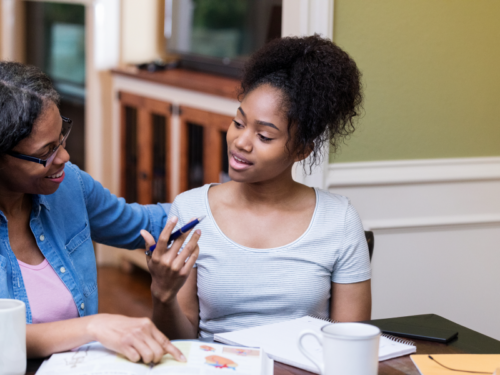
Table of Contents
This Is What Autism in Women Looks Like, According to Therapists

Written By: Sarah Fielding

Clinically Reviewed By: Brooke Cortez
February 24, 2025
5 min.
Here is an expert look at how autism in women can present and ways to cope with masking.
Learn more about our Clinical Review Process
Table of Contents
Autism spectrum disorder (ASD) is one of the most well-known developmental disorders, but differences in how the disorder presents in women are typically overlooked or less understood by medical professionals.
Critically, though, ASD presents differently in everyone who experiences it. “I can’t stress enough that when you’ve met one person with autism, you’ve met one person with autism,” says Charlie Health licensed poetry therapist Beth Couture, LSW. “All autistic people are unique, and it is important to get to know each autistic person and their specific wants and needs rather than making assumptions about them.” Read on to learn more about autism symptoms in women, the struggles women face receiving an autism diagnosis, and gender differences in identifying autistic traits.

Are you a girl or woman struggling to find neurodivergent-affirming support?
Our virtual therapy programs offer personalized, neurodivergent-affirming therapy to help you thrive.
Common symptoms of autism
The National Alliance of Mental Illness (NAMI) defines ASD as a “developmental condition that affects a person’s ability to socialize and communicate with others.” According to NAMI, common symptoms of ASD include:
- Repetitive and routine behaviors
- Delays in language development
- Difficulty making eye contact or interpreting gestures and facial expressions
- Sensory sensitivity and dysregulation
- Fixation on parts of objects
- A lack of social understanding
- Difficulty expressing emotions
Common symptoms of autism in women and girls
One of the most significant differences for females living with autism is that they might experience masking or camouflage—defined as imitating or mimicking their neurotypical peers’ social behaviors. “Autism has long been seen as primarily affecting men and boys, and so medical and mental health providers, and the average person, tend to equate autism with traits that are found in autistic men but that autistic women may have worked hard to camouflage,” says Couture.
Couture warns that masking can be a mentally, physically, and emotionally exhausting experience and hurt someone’s sense of self. This exhaustion and a potential for higher anxiety while managing it can lead to co-occurring diagnoses of mental health conditions such as post-traumatic stress disorder (PTSD), obsessive-compulsive disorder (OCD), depression, attention deficit hyperactivity disorder (ADHD), and borderline personality disorder (BPD), adds Charlie Health Creative Arts Therapist Cecilia Masikini, MT-BC. “This is where misdiagnosis may occur as women are more likely to internalize their social and sensory discomfort in an effort to appear like their neurotypical peers,” she reiterates.
Anecdotally, Masikini notes that in the time she’s worked with kids living with ASD at schools, the boys tended to have more restrictive hyperfixation, like cars or shoes. Meanwhile, the girls’ hyperfixations, like fashion or literature, tended to be more broad.

What is Stimming? Understanding the Connection With ADHD and Autism
Dr. Rasna Kaur Neelam
Gender differences in autism diagnoses
Autism is statistically more prevalent in boys and men, but autism in women often goes undiagnosed. An October 2024 study from the Journal of the American Medical Association (JAMA) found that autism diagnoses between 2011 and 2022 for women increased at a greater rate than for men. However, men were still diagnosed that final year at three times the rate of women.
Research has also consistently shown that women are diagnosed at an older age than men. According to 2020 data from the Centers for Disease Control and Prevention (CDC), one in 36 children receives an ASD diagnosis.
Couture says that this “often means that they grow up feeling that something is wrong with them as children, but they don’t know what it is. This can be incredibly painful. Getting an autism diagnosis is often a relief and extremely validating.” However, when diagnosed later in life, autistic people fail to receive early intervention, which is critical to development and functionality later in life. Masikini adds that this off feeling can also cause imposter syndrome and self-doubt.
How can autistic women and girls cope with autism?
It can’t be emphasized enough, but each autistic person is unique and will have different ways of moving through the world that make them the most comfortable. Here, experts share what coping strategies might be most beneficial to autistic girls and women, especially in regard to masking and sensory overload.
1. Take time out
Everyone needs breaks to recharge, but someone living with ASD might really benefit from scheduling downtime post-intense social interactions, says Masikini.
Couture recommends scheduling breaks throughout the day to reduce the chance of getting overwhelmed. These moments can be as simple as taking a break in a quiet space to be alone with your thoughts.
2. Regulate the senses
Similar to this is being aware of different ways to regulate the senses. Masikini says that “wearing comfortable clothing, having fidget toys, weighted blankets, dim lighting, and more can decrease the anxiety that may be constantly experienced throughout the day.”
3. Do creative activities
One problem with masking is that autistic people miss the opportunity to be their true selves. Couture suggests autistic individuals pursue creative outlets like writing and art. “Activities like these allow people to express their true emotions and authentic selves and express their creativity,” she says.
4. Break down tasks
Staring down a massive task is overwhelming. Extra support for executive functioning can come through creating checklists, smaller tasks, and notes. According to Masikini, these steps can improve a person’s experience with a task.
5. Take care of your well-being
Everything is harder when a person isn’t taking care of themselves. “Getting enough sleep, eating well, exercise, meditation, and quiet time can all help women feel their best and manage stress,” says Couture.
6. Find supportive people
There is something so wonderful about being around people who create a sense of calm and a space to be oneself. It can be a huge change to find “safe spaces and like-minded people to ‘unmask’ around,” says Masikini.
“Because interacting with others can often feel invalidating for females with autism, finding supportive and relatable people can be very helpful,” adds Masikini. “Support groups and groups based on common interests can help women feel less isolated and help them build strong support networks and communities.”

How Charlie Health can help
If you or a loved one are a woman with autistic traits who could use some extra mental health support, Charlie Health is here to help. Charlie Health’s virtual Intensive Outpatient Program (IOP) provides more than once-weekly mental health treatment for dealing with developmental disorders and serious mental health conditions, including anxiety, depression, trauma, and more. Our expert clinicians incorporate evidence-based, neurodivergent-affirming therapies into individual counseling, family therapy, and group sessions. With treatment, autistic individuals can learn to manage their well-being. Fill out the form below or give us a call to start healing today.
References
https://jamanetwork.com/journals/jamanetworkopen/fullarticle/2825472
https://pubmed.ncbi.nlm.nih.gov/38181181/https://www.nami.org/about-mental-illness/common-with-mental-illness/autism/
https://www.cdc.gov/autism/data-research/index.html




